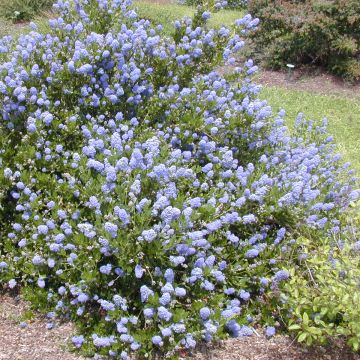Shipping country and language
Your country of residence may be:
Your country of residence is:
For a better user experience on our website, you can select:
Your shipping country:
Andorra
Austria
Belgium
Bulgaria
Canada
Chile
Croatia
Cyprus
Czechia
Denmark
Estonia
Finland
France
Germany
Greece
Hungary
Iceland
Ireland
Italy
Latvia
Lithuania
Luxembourg
Malta
Monaco
Netherlands
Poland
Portugal
Romania
Slovakia
Slovenia
Spain
Sweden
Switzerland
United Kingdom
We only deliver seed and bulb products to your country. If you add other products to your basket, they cannot be shipped.
Language:
French
German
Spanish
English
My Account
Hello
My wish lists
Plantfit
Log in / Register
Existing customer?
New customer?
Create an account to track your orders, access our customer service and, if you wish, make the most of our upcoming offers.
Drought-tolerant Ceanothus, all our special offers
Does this plant fit my garden? Set up your Plantfit profile →
Available in 2 sizes
Available in 1 sizes
A selection of drought-tolerant Ceanothus, perfectly adapted to summer drought. These are evergreen California Lilacs like the Ceanothus Concha or the creeping ceanothus, whose blue flowering is a delight in spring. With exemplary sobriety, these bushes are perfect for landscaping dry gardens in the Mediterranean region or by the sea. With varying sizes and habits, they can be planted on large slopes, in rockeries or above a wall, where the soil is very well drained. Among the most rewarding, we can mention the Ceanothus griseus 'Yankee Point' which forms a wide mass and blooms for a long time, for 5 to 6 weeks between April and June. Or 'Italian Skies', compact, bushy, indifferent to limestone, and withstands very dry summers as well as frost. To form an exceptionally beautiful ground cover, for example, plant the Ceanothus 'Blue Sapphire', a variety that is both bushy and creeping, offering a long flowering of intense and deep sapphire blue. Many evergreen species and varieties are adapted to dry conditions. However, summer or autumn flowering cultivars such as 'Burkwoodii' and 'Automnal Blue' do not tolerate arid soils well. Preferring poor soils, dryland ceanothus fear moisture during both winter and summer. However, when they thrive, these plants require no maintenance.
The most drought-tolerant evergreen ceanothus are generally not very hardy. Depending on the varieties, they can withstand temperatures as low as -6/-10 °C (21.2/14°F) in rocky soil.
Haven't found what you were looking for?
The flowering period indicated on our website applies to countries and regions located in USDA zone 8 (France, the United Kingdom, Ireland, the Netherlands, etc.)
It will vary according to where you live:
- In zones 9 to 10 (Italy, Spain, Greece, etc.), flowering will occur about 2 to 4 weeks earlier.
- In zones 6 to 7 (Germany, Poland, Slovenia, and lower mountainous regions), flowering will be delayed by 2 to 3 weeks.
- In zone 5 (Central Europe, Scandinavia), blooming will be delayed by 3 to 5 weeks.
In temperate climates, pruning of spring-flowering shrubs (forsythia, spireas, etc.) should be done just after flowering.
Pruning of summer-flowering shrubs (Indian Lilac, Perovskia, etc.) can be done in winter or spring.
In cold regions as well as with frost-sensitive plants, avoid pruning too early when severe frosts may still occur.
The planting period indicated on our website applies to countries and regions located in USDA zone 8 (France, United Kingdom, Ireland, Netherlands).
It will vary according to where you live:
- In Mediterranean zones (Marseille, Madrid, Milan, etc.), autumn and winter are the best planting periods.
- In continental zones (Strasbourg, Munich, Vienna, etc.), delay planting by 2 to 3 weeks in spring and bring it forward by 2 to 4 weeks in autumn.
- In mountainous regions (the Alps, Pyrenees, Carpathians, etc.), it is best to plant in late spring (May-June) or late summer (August-September).
The harvesting period indicated on our website applies to countries and regions in USDA zone 8 (France, England, Ireland, the Netherlands).
In colder areas (Scandinavia, Poland, Austria...) fruit and vegetable harvests are likely to be delayed by 3-4 weeks.
In warmer areas (Italy, Spain, Greece, etc.), harvesting will probably take place earlier, depending on weather conditions.
The sowing periods indicated on our website apply to countries and regions within USDA Zone 8 (France, UK, Ireland, Netherlands).
In colder areas (Scandinavia, Poland, Austria...), delay any outdoor sowing by 3-4 weeks, or sow under glass.
In warmer climes (Italy, Spain, Greece, etc.), bring outdoor sowing forward by a few weeks.














